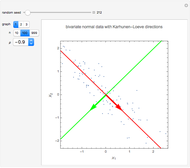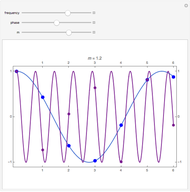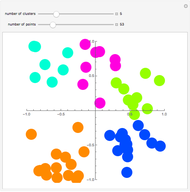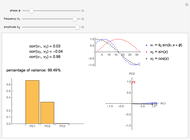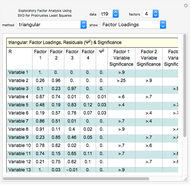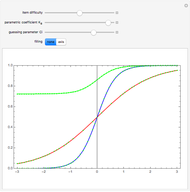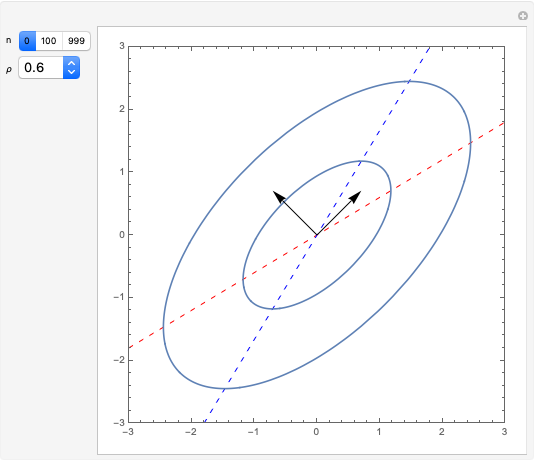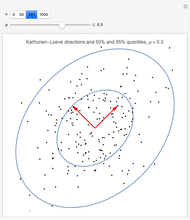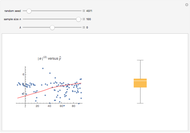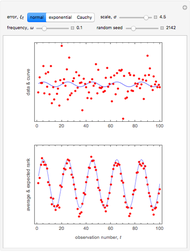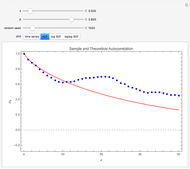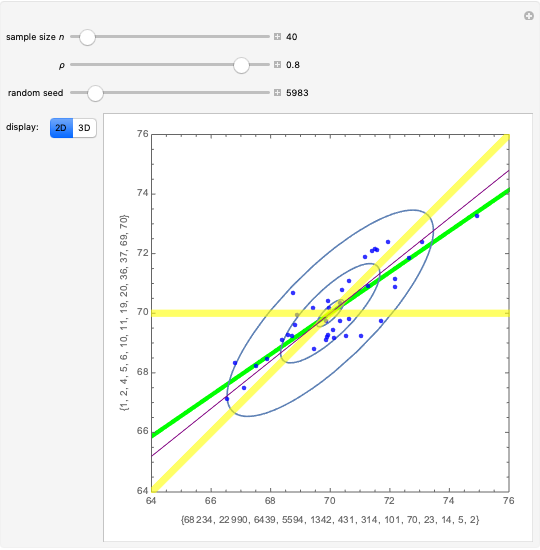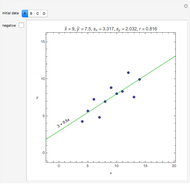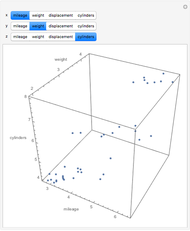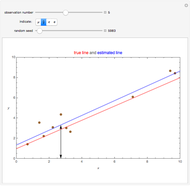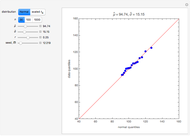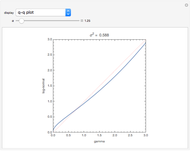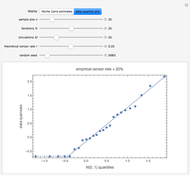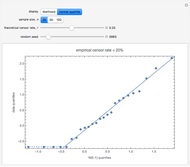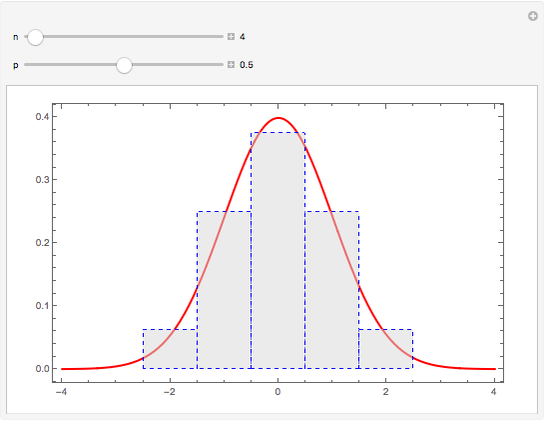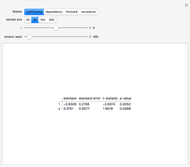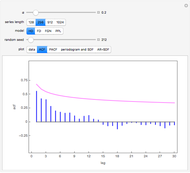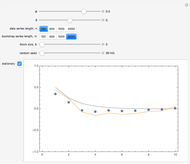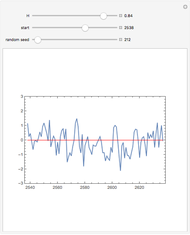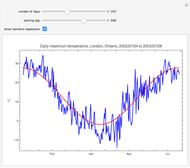Fisher Discriminant Analysis

Requires a Wolfram Notebook System
Interact on desktop, mobile and cloud with the free Wolfram Player or other Wolfram Language products.
The 30 round points are data. The 15 red points were generated from a normal distribution with mean  , the 15 blue ones with mean
, the 15 blue ones with mean  , and in both cases the covariance matrix was the identity matrix. The problem is to classify or predict the color using the inputs
, and in both cases the covariance matrix was the identity matrix. The problem is to classify or predict the color using the inputs  and
and  .
.
Contributed by: Ian McLeod (March 2011)
Open content licensed under CC BY-NC-SA
Snapshots
Details
The canonical direction is given by
 ,
,
where  and
and  are the between- and within-classes covariance matrices. Hastie, Tibshirani and Friedman (2009, §4.3.3) [3] show that
are the between- and within-classes covariance matrices. Hastie, Tibshirani and Friedman (2009, §4.3.3) [3] show that  is given by the largest eigenvalue of
is given by the largest eigenvalue of  .
.
The more general case where the number of inputs  is greater than 2 is also considered in [3], but the basic principle of finding the canonical direction is the same. In our illustrative problem we have
is greater than 2 is also considered in [3], but the basic principle of finding the canonical direction is the same. In our illustrative problem we have  inputs as well as
inputs as well as  classes. In general, there are
classes. In general, there are  orthogonal canonical directions with the first canonical direction as defined above. Sometimes, as in [2], it is sufficient just to use just the first canonical component. For extensions, see [3].
orthogonal canonical directions with the first canonical direction as defined above. Sometimes, as in [2], it is sufficient just to use just the first canonical component. For extensions, see [3].
[1] Wikipedia, "Linear Discriminant Analysis."
[2] R. A. Fisher, "The Use of Multiple Measurements in Taxonomic Problems," Annals of Eugenics, 7, 1936 pp. 179–188.
[3] T. Hastie, R. Tibshirani, and J. Friedman, The Elements of Statistical Learning: Data Mining, Inference, and Prediction, 2nd ed., New York: Springer, 2009.
Permanent Citation









